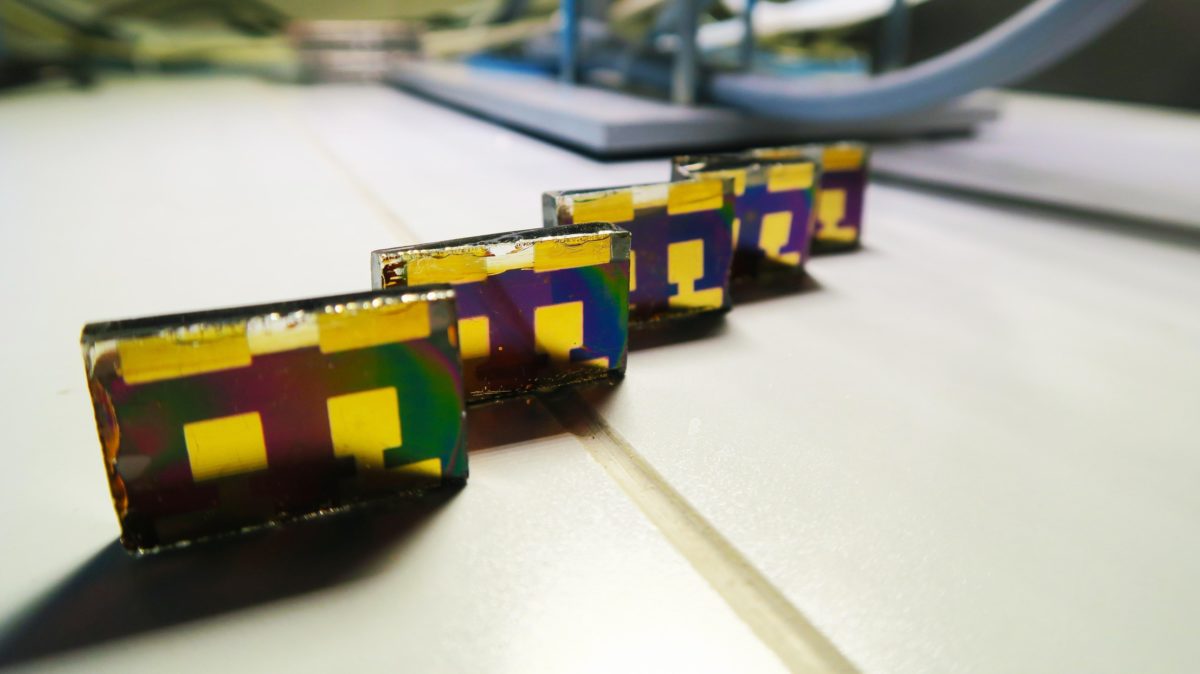The efficiency of the halide perovskite used for solar cell applications can be improved by bacteriorhodopsin (bR), a well-known protein which, thanks to its photosynthetic property, can act as a light-driven proton pump.
According to the paper Bacteriorhodopsin Enhances Efficiency of Perovskite Solar Cells, published in ACS Publications, use of the biological material may lead to the development of more environmentally friendly “bioperovskite solar cells”.
A team of scientists from Penn State University, in the U.S., claim their tests demonstrated the bR protein raised the efficiency of a similar perovskite cell from around 14.5% to 17%. “Previous studies have achieved 8% or 9% efficiency by mixing certain proteins inside solar cell structures,” said joint author of the study Shashank Priya.
The researchers used Förster Resonance Energy Transfer – a technique for analyzing energy transfer between two light-sensitive molecules – to predict the strength of long-range excitonic transport between the perovskite and bR layers. As both have similar banding gaps, the research team sought to align them. “Mixing the bR protein into perovskite solar cells helped electron-hole pairs better move through the devices, reducing recombination losses and boosting efficiency,” said the paper’s authors. “Titanium dioxide functionalized with the bR protein is shown to accelerate the electron injection from excitons produced in the perovskite layer.”
The research is said to have potential applications for hybrid artificial-biological PV devices.
Time to step UP
 pv magazine is investigating the use of lead, a highly toxic material, in solar module manufacturing as part of our UP campaign focusing on sustainability across the renewable energy industry. The use of lead in perovskite solar cells is a divisive issue. Should manufacturers use alternative materials, possibly at huge commercial risk, or is lead a necessary evil in the high efficiency solar modules required to attempt to mitigate catastrophic climate change in the short time we have left to do so?
pv magazine is investigating the use of lead, a highly toxic material, in solar module manufacturing as part of our UP campaign focusing on sustainability across the renewable energy industry. The use of lead in perovskite solar cells is a divisive issue. Should manufacturers use alternative materials, possibly at huge commercial risk, or is lead a necessary evil in the high efficiency solar modules required to attempt to mitigate catastrophic climate change in the short time we have left to do so?
Keep an eye out for the October print edition of pv magazine for an update on how lead is used in perovskite solar cells.
This content is protected by copyright and may not be reused. If you want to cooperate with us and would like to reuse some of our content, please contact: editors@pv-magazine.com.




I think this is something important if organic/perovskite solar cells are to pay a role some day. Besides bacteriorhodopsine`s retinal there are many biological compounds that can theoretically help the transport of excitons. They are all terpenoids and include carotenoids, xanthophylls, chlorophyll… most of them can be found in the light-harvesting complexes of plant chloroplasts for some reason.
I really hope this kind of research goes ahead.
All well and good but how is the commercialization of rechargeable magnesium batteries progressing and is it likely we will see subsidies to facilitate the rollout of home storage